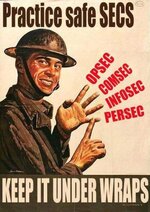- Messages
- 680
- Reactions
- 1,266
I have dipped into the SDR, and while one can make it work, I don't consider it a robust system. I'm not computer illiterate, but it takes some wrangling to get things set up, which isn't great for a newbie (for example, of the SDR software that I could find, the scanning feature was not native but a plug-in and not an easy one at that, requiring altering and inserting scripts). As well, a computer, a dongle, and a base style discone antenna just don't go into the field well or make for easy emcomm set up and mobility. If you want a scanner, than buy a scanner! By the time you get the correct gear for the SDR to do all it's tricks, i.e. correct antenna, low-loss coax, dongle, up-converter, and the computer with 8GB RAM and duo core x64 processor and SDR software that is installed and runs reliably (and that's a big ask I think) you could buy a Uniden 396XT that still does far more than a SDR set up but would cost the same or less and it will go in a pouch on your hip if needed.Certainly - having someone listening much of the time is recommended. An SDR (Software Defined Radio) is recommended also. You plug it into your USB port on a laptop and program it to scan the frequencies and modes you want to keep track of. For listening this would be a good inexpensive way to cover a lot of bandwidth.
That said, I have only read about them and I don't have one yet, so I wouldn't mind hearing from others who have some experience in that area.
An SDR requiring a computer (or maybe a smartphone?) is not bad - a decent solar panel to charge the laptop battery (or a separate lithium ion battery) is quite doable - my laptop only uses 25 watts at most - less than many LED lightbulbs.
Don't forget CB radios either! Not hand held ones, but a basic unit and a tuned antenna set up on top of a truck (or with a perpendicular ground plane) will do quite a bit and doesn't take any licensing. One can even DX with CB's so there is that fun to be had.
Like a lot of tech systems, there are trade offs. You don't need to necessarily monitor 1.2GHZ or much above 70cm if you're looking to get public safety info; in fact a receiver that gets 150mhz to 170mhz will get you the majority of the important local traffic (a generalization, but mostly true with exceptions of course). If you try to monitor everything, then you are not only burdened with more system usage (maxed cpu) but while you're scanning bands that are rarely used, or only for specific applications, and/or mostly encrypted, you'll miss the relevant traffic. I've collected a data bank of 1600 channels that I've programed into my Uniden 396T, all of which I could be monitoring. But after years and years of listening, I can confidently say 95% of the traffic takes place in a couple dozen frequencies (around here; if you live in a metro area that's different for example); so my point is you lose relevance and utility trying to 'get it all' and are better off making strategic choices.
And, appropriately, here's an excellent article from an excellent website that I find has quality information and advice:Understanding Survivalist Communications Needs
Last Edited:












